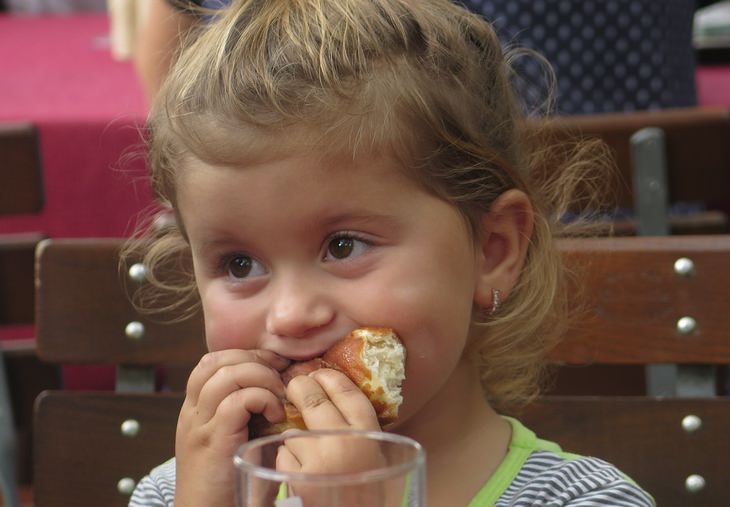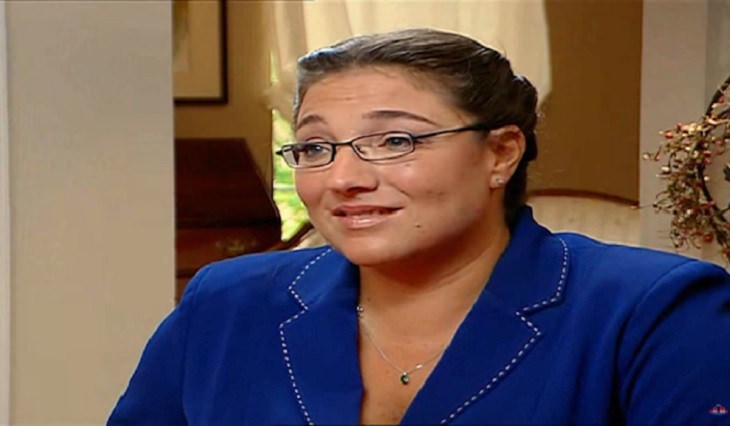If you haven’t heard of Super Nanny, then you must be living under a rock. The original Super Nanny, Joe Frost, is a writer and expert on parenting and educating children who starred in the famous TV show many years ago. With nearly three decades of experience in therapy and education and a bold and direct approach, Frost brings the most useful advice to a variety of common child-rearing problems that all parents should heed.
How to teach children to take responsibility for their mistakes
Many people advise parents to be careful not to blame their child for various wrongdoings, but if we want to raise children who take responsibility for their mistakes, whether made intentionally or by accident - they need to own up to it. If your child bothers a friend for example or pushes a cup off the counter and breaks it, they are responsible for it and not someone else.
We all make mistakes and for children, accidents and checking boundaries are part of the process of learning and distinguishing between bad and good, it is a growth process for which responsibility must be a part. This is how to teach your child to take ownership of their mistakes:

- Don't Fear the Embarrassment - As parents, we do not want our children to feel ashamed of their actions, but it isn’t necessarily a negative feeling, rather one that exists in all of us and is part of a process of learning from mistakes, expression of sorrow and remorse.
- Teach your child how they affect the environment - Children need to understand that certain decisions are inappropriate and can have a negative and painful effect on others' lives. This understanding and the development of their sense of responsibility and empathy will lead them to make better decisions later in life and will develop their ability to separate the ego from various considerations and understand that their actions must be accounted for.
How to stop tantrums
Coping with tantrums starts by understanding their meaning and why they occur. In the first years of a child's life, we see babies express their feelings physically, and they often do so in public places. Sometimes tantrums will end with a high-pitched scream, and can also include a total meltdown, characterized by flailing arms and legs accompanied by crying.
Such behavior can be quite frightening and embarrassing for parents, especially when they are first experienced, and the parent’s first instinct is to take control of the situation by surrendering to the child's demands. There are three types of tantrums: forced, situation-dependent, and emotional. Understanding the type of tantrum is key to dealing with it:

- A forced tantrum is one that occurs when a child wants something he can’t have. Children up to age 3 live in a bubble where they feel the world revolves around them, and when they are told “no” by their parents, they cry and continue until the parent agrees to the demand and gives them what they want. And this is how they learn to force a tantrum to get what they want. When a parent submits to the demand they teach their child that if they want something, all they have to do is cry to get it. This eventually becomes a pattern that will only continue to worsen if the parent does not persist in refusing to submit to the demand consistently over a period of time.
- A situation-dependent tantrum occurs when you are away from home and engaging in a certain activity, such as playing on a playground or a trip to the mall, and the moment you tell your child it's time to leave they freak out and start screaming and crying. The reason for this outburst lies in the anxiety that children feel thinking they’ll never again get to go to the playground or the mall. The way to deal with the phenomenon is to prepare your children. Give them a warning telling them that you’re going to go home in 20 minutes. Another way of coping is to make your favorite experience something you do twice a week so that your child will learn that even if he is forced to leave a certain place at the moment, he will eventually return to it.
- Emotional tantrums are the more serious type of outbursts and require a concerted effort on the part of parents to be able to handle them. These behaviors are usually a reflection of difficult feelings that result from difficult situations that occurred in the child's life recently, such as a new sibling, divorce, moving, etc. When a child's natural environment changes and he sees that the change also affects the adults around him, he may respond with a terrible tantrum. Even in these cases, the solution is found in maintaining a routine, which is comforting for children and gives them a sense of security. If you have moved to a new home, for example, make sure that your child has regular playdates with their new classmates.
How to help a shy and withdrawn child
Many children express shyness at one stage or another in their development, which is natural, so the word "restraint" can also be used to define the phenomenon. We don’t need to "fix" children who are shy/restrained as part of their temperament and character. The point at which such behavior should put up a red flag is whether it is sustained or strengthened as the child grows, and leads to a situation in which they avoid forming friendships and taking part in new experiences. The recommended approach for parents to address this problem consists of several important steps:

- Pay attention to what you are saying - if you label your child "shy" or "introverted”, this can lead to your label being further realized. It's easy to say, "You are a big boy, don’t be shy," but such statements may make your child feel as though their feelings are being ignored which will cause even greater anxiety. The correct way to react to shyness and anxiety is to respond with understanding and warmth and by saying something like, "It sounds like you're feeling stressed."
- Let them understand that they are not alone - try to generalize and normalize your children's fears and explain to them that many people feel the same way and that we all feel insecure from time to time. Because children learn social skills by watching other kids, you can share a story you've heard about their friends or your own personal story about trying to overcome discouraging things and the good feeling you get after the effort you made to overcome your fear.
- Communicate and praise - you should talk to your child about their anxiety, stress or shyness, but not while they are experiencing it. Try to find a calm time in which you can communicate better and maintain a dialogue in which your child will also avoid reacting anxiously. You can even role-play, the child becomes the parent and the parent becomes the child, allowing them to really delve into their feelings from an outside perspective. The moment your child manages to overcome being closed off, it is important that you praise them meaningfully, saying, "Even though you were stressed out, you asked for help and that was very brave of you."
How to stop picky eating
If you are in a constant struggle with your children about what they eat or don’t eat, you are really not alone. The need to instill healthy and balanced nutrition habits in children must start from an early age because no one is born a picky eater, rather this habit is fed over time but fortunately, it can be changed. The key to that change begins with early planning and preparation, a lot of personal examples and maintaining regular habits. Here's how to do it right:

- Eat meals that you cooked at regular times - children need structure and set times so it is important not to rely on fast food and meals on the road, but to prepare most of your food yourself, even if the dish is very simple. So you can control the ingredients and know that you’re giving your children healthy food and you can eat routinely making it a habit.
- Serve as a good example - so that your children will eat healthy, varied, nourishing and non-fattening foods, you must set a good example. It is impossible for a parent who eats fatty and nutritionally worthless food, to teach their children otherwise. Remember that they learn everything from you.
- Keep exposing your children to food that they do not like or know - you are the ones who determine the meal you will serve your children, how large it is and what will be included in it. Even if your child refuses to taste different foods, continue to offer it to them in different variations, but don’t push. Don’t go crazy with serving sizes, and maintain balance and creativity.
How to respond to low self-esteem
There is a disturbing phenomenon that is very characteristic especially among young girls and teenagers and it is a concern with their image and appearance. From the age of about 4, they become aware of this issue with great intensity, just as they begin to decide on their own what to wear and how to style their hair. To make sure they don’t encounter any problems of this sort, it is super important for mothers and other female figures to exhibit good body image and self-confidence. If you have a part of your body that you want to change, you can talk about it near your girls, but you have to be aware of the difference between not liking a part of your body and self-loathing.
Fathers and masculine figures, on the other hand, should pay attention to the comments they make about the appearance of their children and focus on building their inner self-confidence. In recent years, boys have become increasingly aware of their externalities, so the following tips are right for everyone. If as parents you encounter an excessive preoccupation with your child's self-image and fear that they are developing a fixation on the subject, these are the things you need to do:
- Never say "I hate that part of my body" - When your kids hear you, they start analyzing your statement and wondering what parts of their bodies they hate. It is not necessarily a conscious process that can be stopped and may be the beginning of an excessive self-flagellation campaign. It's good that children want to take care of themselves and feel pride in their outward appearance, so don’t make your solution stopping them from doing so. Your responsibility is first of all not to be critical and judgmental of yourself in their presence
- Don’t mock your child's external appearance - fathers and masculine figures in children's lives play an important role in children's development of self-image - even if they aren’t as fussed about appearance as girls are. This role begins by teaching children - boys and girls - about self-esteem, presence, and self-confidence that does not derive solely from what they have from the outside, but mainly from what they have within. Fathers who express ridicule or dislike of their children's external characteristics (and parents or relatives in general) may cause long-term damage that will counteract all the positive reinforcement you have given them.
source:
youtube/Supernanny






